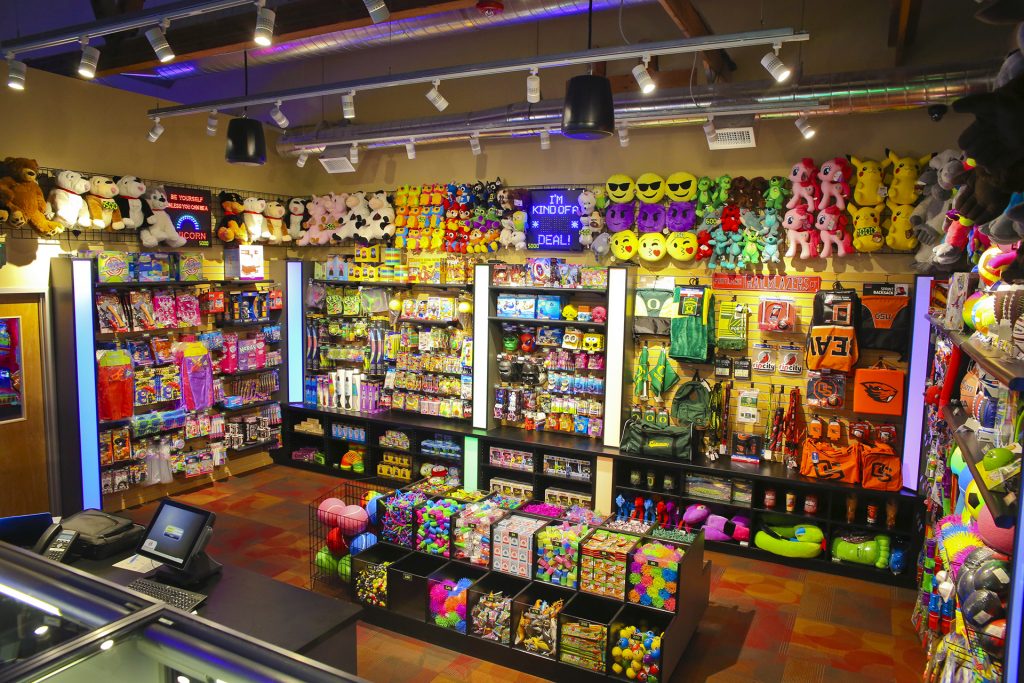The Evolving Industry
Becoming “Mainstream” and the Benefits of the Redemption Store
By George McAuliffe, Chief FEC Strategist, Redemption Plus

W. Deming was a great management thinker of the 20th century. When his ideas for changing the U.S. auto industry manufacturing practices were rejected, he went to Japan. The result was unprecedented growth in the Japanese auto industry (and steep decline in the U.S. causing us to play catch up). Perhaps Deming’s most famous quote is “It is not necessary to change. Survival is not mandatory.”
The FEC world has enjoyed its own changes over the years. Starting with the venue: the combination of bowling and family entertainment attractions has revitalized our industry in recent years. I’ve written a lot about how the change from tokens to debit card systems (DCS) has benefitted us by creating a better experience, supporting higher game and attraction pricing, providing labor savings, reduced service issues, better management intelligence, and improved marketing tools. An offshoot most recently is the consumer acceptance of redemption e-tickets, a terrific add-on change to DCS that has “arrived.”
Mainstreaming
I’ve hesitated to say this out loud, but I’m starting to think that the arcade has become mainstream entertainment. For the first half of my 38 years in the business we didn’t even use the word “arcade.” It had connotations of smoke filled hangouts where all sorts of undesirable behavior could occur. That attitude was left over from decades before, but it was real and had to be fought with mall developers, city zoning boards, and parents. Today, we see the arcade (and the FECs of which it is a part) not only arriving, but rising in the popular culture. For a taste of what I mean, check out the Saturday Night Live intro every week, pay attention to the settings in popular TV shows and witness the demand from corporations as a venue for their offsite gatherings. Today, we are entertaining three generations of players.
Those successes didn’t just happen, they are the result of the changes we’ve made in how we operate. Central to those changes has been the rise of redemption. Manufacturers have given us a steady stream of compelling games with wide age and gender appeal. Redemption suppliers have moved beyond cheap, plastic novelty toys (veterans will remember when it was called “slum” goods). Today we offer a variety of toys, electronics, sporting goods and collectibles that the public appreciates and is willing to play for.
Latest Opportunity: Redemption Stores
In recent years, I’ve become concerned about the “sameness” in how our redemption counters present themselves. Even when we diligently change the merchandise, it is not always perceived as change due to our merchandising practices as an industry.
As a true believer in Deming’s words, that makes me nervous. It has caused me to rethink my previous rules for when a redemption store is worthwhile versus a counter.
In our consulting practice we always felt like $500,000 in game room sales was a good benchmark to consider a full store over a counter. Space is a consideration, of course: A store consumes more and has to be weighed against the revenue of displaced games. On the other hand, a redemption store can be operated with less labor than a counter. But the calculation goes beyond those tangibles.
We operate our businesses today in the “Experience Economy.” Today’s consumers expect a great experience in their lives and certainly for their entertainment time and dollars.
There is this thing called the “peak-end rule” (google “peak-end” and you will find plenty of research). Wikipedia defines it as: “a psychological heuristic in which people judge an experience largely based on how they felt at its peak and at its end, rather than based on the total sum or average of … the experience.”
The last thing most FEC attendees do before heading home is redeem their redemption tickets. The redemption check out experience is the last impression they will have of their visit and therefore has tremendous influence on their decision to return.
With a greater appreciation every year about how experience drives success in FECs, we have adjusted our parameters down on space and sales volume as to when a redemption store is the best choice. Guest Experience simply gets more weight in the calculation.
In a store setting, guests do their own shopping and prize choice, unassisted by staff as in a counter scenario. They enjoy the ability to “touch and feel” the merchandise as they shop and browse, just like a typical retail shopping experience. In addition, the scale and novelty of the redemption store supports a high perceived value of the entire game room experience, supporting higher spending per visit and increased repeat visitation. We see the results in our client base: Where we have retrofitted counters with stores, we see higher game room sales with increases as high as 25%.
Redemption stores simply are the better choicewhenever possible for ensuring that the guest’s last impression is a great one.
George McAuliffe has created and operated family entertainment centers from 2,000 to 150,000 square feet as a corporate executive, entrepreneur and consultant. He’s President of Pinnacle Entertainment Group and leads the company’s strategic advisory team. George, recently moved back “home” to the Jersey Shore with his wife Julie, has a passion for passing along what he’s learned in the fun business to the new generation of operators and suppliers.
Readers can visit grouppinnacle.com for more information or contact George at georgemc@group
pinnacle.com; phone: 314-422-7197.

